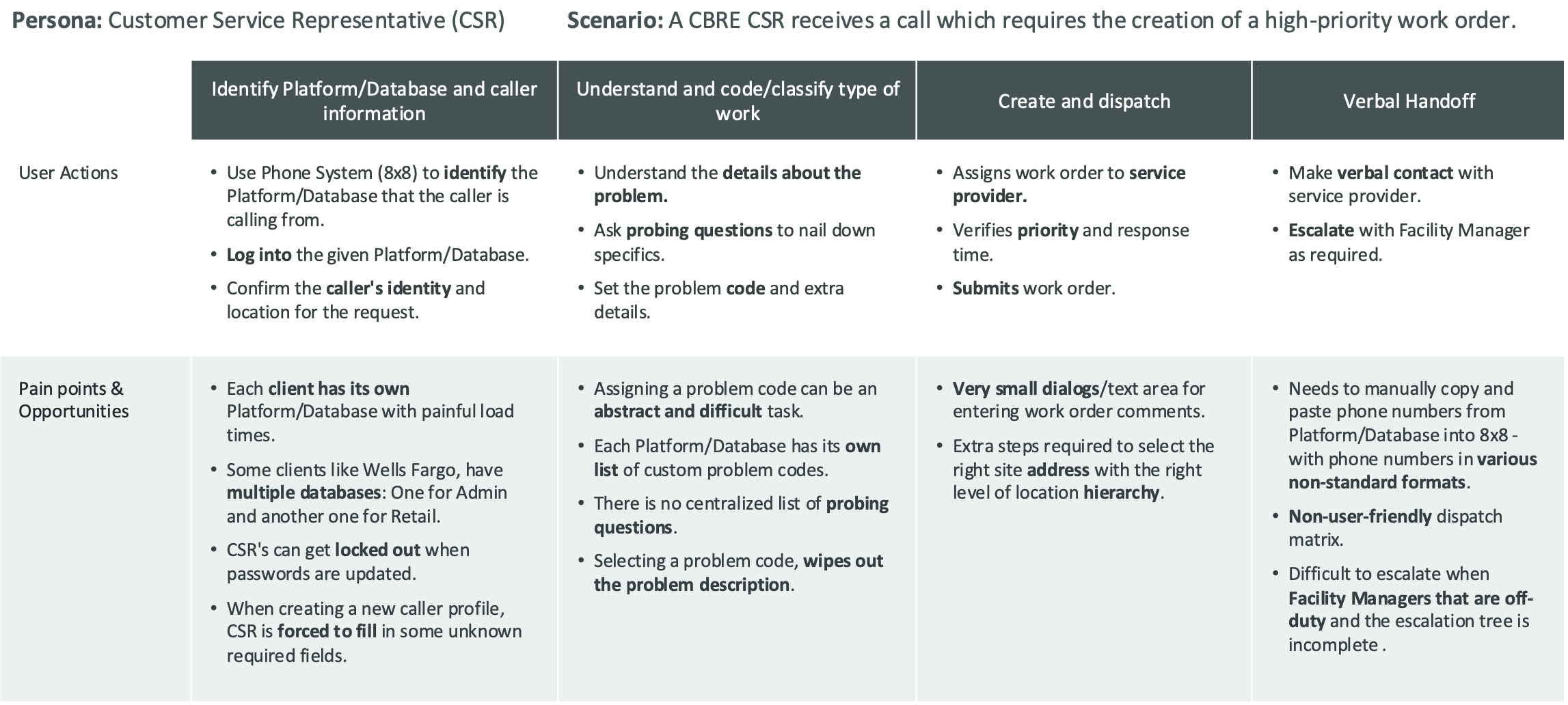case study
Rethink Self Service & Call Center
Problem Statement
The current Call Supporting Process is fragmented, inefficient, and error-prone. Call Center Representatives has to navigate multiple platforms with inconsistent login and managing experiences, unreliable caller identification, and ambiguous problem codes. There issues led to misclassified work orders, wasted Technician hours and billing errors.
For Self-Service Users, the experience was equally frustrating with lost tickets and confusing navigation when submitting service requests.
Goal
Streamline the CSR workflow with a unified view for caller handling and service request creation.
Improve accuracy in problem classification and prioritization through guided inputs and probing questions.
Centralize and standardize call center operations across existing instances for better reporting and transparency.
Design Outcome
Improved overall discoverability by 24.4% and Ease of Use (UEM) by 13.6%
Contributed to a 30%-40% decrease in call-backs to the Call Center in one year
Achieved a 44% time reduction for the self-service submission process
Achieved an 18% reduction for the call center while increasing Feedback Satisfaction by 65%
Responsibility
Led the journey mapping process, aligning cross-functional teams on pain points and opportunities.
Directed research synthesis, observing sessions, reviewing recordings, and shaping key insights.
Defined and guided the user flow, ensuring clarity and efficiency in task assignment.
Set the vision through wireframe concepts, driving alignment on design direction.
Delivered the interactive prototype, enabling stakeholder buy-in and user validation.
Facilitated usability testing, translating feedback into actionable design improvements.
Background
CBRE’s Shared Service Center (SSC) is a global network of integrated, centralized call center services, administrative and functional support. The SSC represents CBRE staff strategically located in North America, Europe, and Asia, delivering global, regional, and country-based support. The USA Call Center office is located in Charlotte, North Carolina.
Research
The Customer Service Representatives are highly experienced (2+ years on average) and demonstrate exceptionally strong aptitude, adaptability, multitasking skills, and verbal communication.
Live observation helps the UXteam to gain empathy andvalidation of the Personauser profiles and user flows,and helps reveal:
The ‘rhythm’ of the callinteractions.
CSR Personal interactivityskills and techniques.
Pain points with customer communication, multi-tasking, UI inconsistencies.
Work arounds that point toUI issues that need to beaddressed.
Current Journey map (1/2)
a CSR creating a high priority Work Order
Current Journey map (2/2)
a CSR updating an existing Work Order
Research
Methods: journey mapping, observing research sessions, synthesizing findings.
Key user pain points and operational bottlenecks.
Callout quotes, data points, or visuals to make the findings real.
Defining the Experience
Journey map + user flow: how you structured the new flow.
Principles guiding the redesign (e.g., clarity, self-sufficiency, escalation efficiency).
Before vs. after comparison (show how workflows were simplified).
Exploration & Concepts
Early wireframe concepts and why you pursued them.
Iterations — what you tested, what failed, what got refined.
Leadership angle: how you set direction and aligned teams.
Prototyping & Testing
Interactive prototype creation.
Usability testing approach (participants, scenarios).
Key learnings and design improvements.
7. Final Design
High-fidelity screens and flows (side-by-side with old system if possible).
Show how it works in real scenarios (self-service vs. call escalation).
Highlight details that make it scalable and efficient.
Impact & Outcomes
Business results: reduced call center volume, faster resolution times, cost savings.
User results: improved clarity, higher satisfaction, better adoption.
If you don’t have metrics, frame as expected impact + qualitative feedback.
9. Reflection
What you learned leading the end-to-end process.
How it shaped your design leadership approach.
Next steps or opportunities for future improvement.



